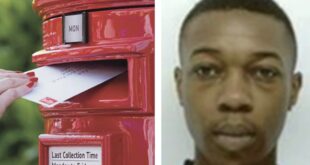The Postie Notes column by Pete Malone
You may have noted that stamps now are larger and include a barcode. This is to prevent stamps from being reused and to protect the income of Royal Mail.
It struck me how much stamps have changed over the last few years – and I don’t just mean the price. We are still among the cheapest postal service in Europe. In most of Europe it costs about £1.20 for a first-class stamp, which compares to less than a pound in the UK.
A recent eBay purchase reminded me of my younger days as the packet arrived stamped with an assortment of commemorative stamps from about 1982. When I was a boy stamps were highly sought after and precious objects with almost everyone collecting them. UK stamps were generally boring showing only the monarch’s profile, while foreign stamps seemed wildly exotic as they were multi-coloured with pictures of flowers and presidents and all sorts.
The post office did issue commemorative stamps and these were much sought after. First day covers could be purchased at post offices and I recall standing in the GPO on Princes Street in Edinburgh waiting for my wife to purchase a set of first day covers.
Stamp collecting, or to give it is posh name – philately – was and still is hugely popular. The term philately was coined by the French to replace the word “timbromanie”, meaning “stamp quest”. Many a damp and rainy afternoon could be whiled away sorting stamps and sticking them in to albums. Shops used to sell small gummed slips of paper to be used as stamp hinges which held the precious item in your album without damaging the stamp itself. The comics of the day often had adverts for stamps which could be purchased on approval and then, after selecting the stamps you wanted, returned to the seller along with payment.
Summertime postcards provided an exciting possibility that a new foreign stamp might be found for inclusion in the collection. Foreign stamps seemed strange and alluring especially if they included the country name – Helvetica, Sverige, Norge.
I can remember having some German stamps from the forties, showing the face of a certain Herr Hitler and I am sure that they are still in the album of which my younger brother now has custody.
My favourite commemorative stamp was a 5 old penny of the liner the QE2. What made it special was partly that it wasn’t a square stamp but long and narrow. It still had the image of the Queen’s head in one corner, as have all stamps since the first penny black. There is much debate about who invented the postage stamp with most credit being given to Sir Rowland Hill, but James Chalmers, a Dundee bookseller, has some claim to the invention of the self-adhesive stamp and as a Dundonian I tend to side with the James Chalmers camp.
Another fruitful source of stamps was the parcel. High face value stamps and often a large number of variants used to make up postage could often provide many attractive samples for the album.
Sadly, printed labels and pre-printed postage stickers have virtually eliminated stamps on parcels so I consider myself lucky to have gotten a packet with four very nice examples of British commemoratives. I just need to pop them in an envelope and send them to my brother for safekeeping.
Now, anyone got a stamp?
Pete Malone is a shopkeeper and postman in Bettyhill.
Do you want to respond to this article? If so, click here to submit your thoughts and they may be published in print.
Source link


